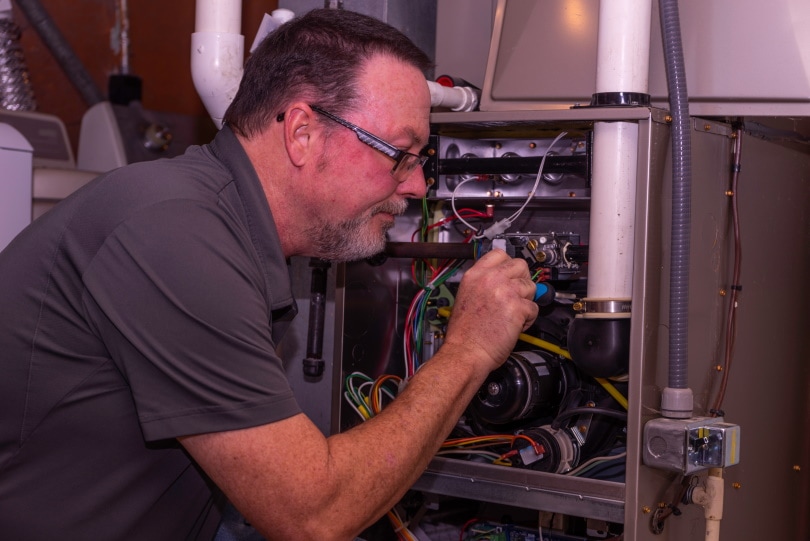16 Job Satisfaction Statistics and Facts: 2025 Update
-
Pete Ortiz
- Last updated:

Note: This article’s statistics come from third-party sources and do not represent the opinions of this website.
On average, a person will work 90,000 hours over their lifetime. This adds up to working about one-third of your life. Because of how much time is spent at the workplace, job satisfaction can make or break a career, not to mention your life.
Although job satisfaction has been improving over the last couple of years, there are still many people who are unsatisfied with their careers and job prospects. Let’s look at job satisfaction statistics and facts for this year below.
Click below to jump ahead:
- Job Satisfaction Stats
- Defining Job Satisfaction
- Job Satisfaction Since the Pandemic
- Dissatisfaction At Work
Top 16 Job Satisfaction Statistics
- Over half of the workers worldwide are satisfied with their work.
- Over half of Americans are satisfied with their jobs.
- As much as 20% of Americans are passionate about their jobs.
- India is the world leader in job satisfaction.
- Companies with high work satisfaction outperform the competition by 202%.
- Over half of Americans believe that coworkers are the key to job satisfaction and happiness.
- Nearly 75% of workers believe that company culture is one of the biggest determiners of job satisfaction.
- The two most important components of job satisfaction are trust and respect.
- Social issues are becoming more important for workplace satisfaction.
- Job satisfaction has increased since the pandemic.
- A little over half of the employees that work from home are satisfied.
- Over half of Americans view remote work as a key to job satisfaction.
- Only 34% of US workers feel engaged at work.
- Less than 50% of millennials are satisfied with their current career paths.
- Japan has the highest number of job dissatisfaction at 58%.
- The majority of legal industry workers are dissatisfied with their jobs at 81%.

Job Satisfaction Stats
Here is a look at how satisfied the members of the workforce are with their careers this year:
1. Over half of the workers worldwide are satisfied with their work.
(GoodFirms)
It is estimated that about 56.68% of workers around the world are satisfied with their employment. Another 30.15% are not satisfied at all, whereas 13.17% are neutral or unsure of their current position.

2. Over half of Americans are satisfied with their jobs.
(Pew Research Center)
America specifically follows the global trends. About 49% of Americans are satisfied with their work, and 30% are very satisfied. On the opposite end of the spectrum, 9% are dissatisfied, and 6% are very dissatisfied.
3. As much as 20% of Americans are passionate about their jobs.
(Phys)
Even though about half of Americans are satisfied with their jobs, about 20% of Americans are actually passionate about them. Someone who is passionate about their job absolutely loves it and feels that their position matters. The growth of 20% is a large increase from past years, but that is still a low number in comparison to the workforce at large.
4. India is the world leader in job satisfaction.
(Randstad)
Most people are surprised to find out that India is the world leader in job satisfaction, with Mexico and Turkey following just behind. India’s satisfaction rate is as high as 89%, which is a little over 10% higher than America’s.

5. Companies with high work satisfaction outperform the competition by 202%.
(LinkedIn)
Work satisfaction is important for more than just the workers. Companies should care about the satisfaction of their workplace as well. Studies have shown that workplaces with high work satisfaction rates can outperform companies with low satisfaction rates by 202%.
 Defining Job Satisfaction
Defining Job Satisfaction
Over the last 3 years, the factors that contribute to job satisfaction have changed dramatically. Here is some information about how modern workers define job satisfaction for themselves:
6. Over half of Americans believe that coworkers are the key to job satisfaction and happiness.
(Career Vision)
No matter which study or worker you ask, coworkers are often listed as being the key to having high job satisfaction and happiness. This is especially true if you are considering the worker’s boss or manager.
It is estimated that 75% of employees quit because of managerial issues. To further show how important culture and coworkers are in the company, only 12% of employees actually leave a job due to money purposes. In other words, coworkers largely impact satisfaction.

7. Nearly 75% of workers believe that company culture is one of the biggest determiners of job satisfaction.
(SHRM)
Related to coworkers is company culture. Company culture describes the environment of the entire establishment. As much as 72% of workers want respect from their boss and coworkers, representing a need for a respectful environment.
8. The two most important components of job satisfaction are trust and respect.
(SHRM)
If you break down company culture into adjectives, the two most important components or adjectives used to describe a company with high job satisfaction rates are trust and respect.
This need for trust and respect reflects the 72% of workers who want their bosses and coworkers to respect them on the job.
9. Social issues are becoming more important for workplace satisfaction.
(Decoding Global Ways of Working)
Social issues have become more prevalent, especially in the workplace. Although there are still specific studies coming out about how social issues impact one’s career, the relationship between social issues and workplace satisfaction is becoming increasingly obvious.
Job Satisfaction Since the Pandemic
The pandemic has had a large impact on job satisfaction. Here is what has changed since 2020:
10. Job satisfaction has increased since the pandemic.
(The Conference Board)
Although the pandemic was a negative experience worldwide, it actually has led to increased job satisfaction. Over the last 2 years, job satisfaction has increased by 1%–2% globally, showing that the pandemic has helped satisfaction rates in the workplace.
Shockingly, 38% of American employees report that they are happier with their jobs now than they were before the COVID-19 pandemic. Only about 11% of the workers wish they had different jobs today.

11. Over half of the employees that work from home are satisfied.
(PWC)
One reason that job satisfaction has increased since the pandemic is due to remote working. Although remote working was difficult at first, a little over 50% of employees that work from home are satisfied.
12. Over half of Americans view remote work as a key to job satisfaction.
(OWL Labs)
Working from home is such an important part of workplace satisfaction today that it is viewed as a key component of career satisfaction. However, only 19% of people would like to work from home forever. Most people just want remote working options for when it is convenient.
Dissatisfaction At Work
Even though satisfaction in the workplace is increasing, there is still an issue with job dissatisfaction. Understanding job dissatisfaction can help workers and employers figure out the problem and fix them accordingly.
13. Only 36% of US workers feel engaged at work.
(Gallup)
Sadly, only 36% of US workers feel engaged at work. Furthermore, 14% of people are actively disengaged. Active disengagement leads to boredom, mistakes, and increased job dissatisfaction.

14. Less than 50% of millennials are satisfied with their current career paths.
(CNBC)
You can look at job dissatisfaction by age group. Currently, millennials tend to be the most dissatisfied with their current career path, though Generation Z, or Gen Z, is dissatisfied as well. To reflect this dissatisfaction, millennials are three times more likely to leave a job than past generations.
15. Japan has the highest number of job dissatisfaction at 58%.
(Pew Research Center)
Whereas India has the highest rates of job satisfaction, Japan has the lowest rates. Japan’s dissatisfaction rate is as high as 58%, meaning the majority of Japanese workers are unsatisfied with their careers.
Japanese culture is currently facing a lot of problems with citizen dissatisfaction. The majority are dissatisfied with work, and a large portion is also dissatisfied with the government and other related factors.
16. The majority of legal industry workers are dissatisfied with their jobs at 81%.
(Pay Scale)
You can actually rank job dissatisfaction by industry. The legal industry tends to have the highest amount of dissatisfaction. As much as 81% of legal industry workers are dissatisfied. Consequently, the legal industry also has some of the highest rates of alcoholism and suicide.
Frequently Asked Questions About Job Satisfaction
Why does job satisfaction matter?
Job satisfaction is important for both the worker and the company. It increases the well-being of the worker, but it also leads to lower turnover, higher productivity, and increased profits on behalf of the company.
(Villanova University)

What is the current job satisfaction rate?
About 79% of Americans are either satisfied with their job or very satisfied with their job.
(Pew Research Center)
What is the biggest factor in job satisfaction?
The number one factor for determining job satisfaction is interest or appreciation for your work. In other words, it’s nearly impossible to be satisfied with your job if you simply don’t care about it.
(Forbes)
At what age is job satisfaction highest?
People over the age of 65 years old are the most satisfied with their work, whereas millennials and Gen Z are the least satisfied.
(Reuters)
Has job satisfaction increased?
Job satisfaction has increased dramatically over the last century. It has continued to increase over the last 3 years.
(The Conference Board)

What is the unhappiest profession?
The legal industry tends to be the unhappiest industry as a whole, although fast-food workers are equally as unhappy.
(Pay Scale)
Conclusion
As you can see, there are a lot of interesting ways that job satisfaction has changed. As of 2022, job satisfaction is at a high and is looking up, but there are still a lot of people who are unsatisfied with their jobs.
Only by learning about job satisfaction versus dissatisfaction can you improve your career and help change the culture. Hopefully, job satisfaction will continue to increase in the future so as few people as possible are dissatisfied with their careers.
See Also:
Featured Image Credit: Alex Kotliarskyi, Unsplash
Contents





